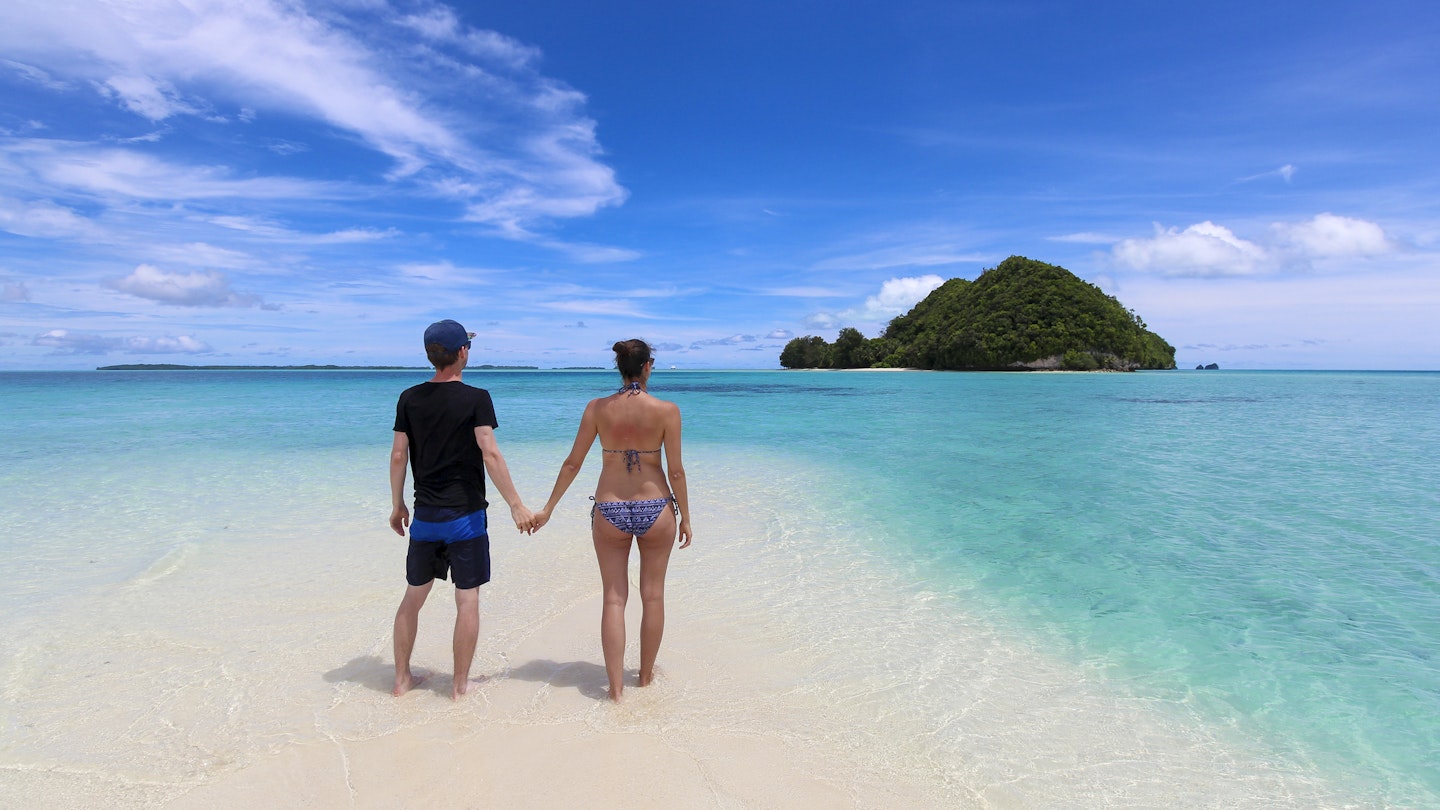Exploring the Paradise of Palau
A string of 340 coral and volcanic islands spread against the deep blue waters of the western Pacific, Palau is a picture postcard of paradise.
Given that only 90,000 tourists visited the country in 2019 – and in the years since considerably less – this is the kind of destination to live out your scuba diving dreams or Robinson Crusoe fantasies on uninhabited tropical beaches.
From unique marine life encounters to towering waterfalls and WWII ruins, there’s plenty here to pique the interest of visitors. Outside of the handful of beach resorts that draw large numbers of visitors on national holidays, you’ll have much of the country all to yourself to explore.
When Should I Go to Palau?
Palau’s best season is the dry period from December to April. With ideal weather for water sports and visiting the country’s many islands, this is, of course, also the peak tourism season, and prices are higher – particularly during the New Year holidays (both Western and Chinese).
While the wet season from May to November presents more challenges for tourism, visiting is possible throughout the year, as the country does not experience typhoons.
How Long Do I Need in Palau?
If you’re visiting Palau as part of a longer island-hopping itinerary, two to three days is sufficient to hit the highlights. Visit Koror’s few museums upon arrival to get to know the culture and history, spend the next day on a boat trip to the Rock Islands, and finish with a day hike to 217m-high Ngardmau Waterfall – the tallest in Micronesia.
With more time, opt for several days of diving (making sure to leave a one-day surface interval before hopping back onto a flight) or explore Peleliu’s jungle-ruin WWII sites and its handful of idyllic empty beaches. If time and money are no limits, consider hiring a private boat charter to Kayangel Atoll or the remote Southwest Islands.

Is It Easy to Get In and Around Palau?
Unless you’re captaining your own boat or have caught a lucky ride with a friend, expect your first impression of Palau to be an endless blue panorama from the window of an airplane – the most affordable way to access this destination if a yacht charter isn’t in the cards. Koror’s Palau International Airport (ROR) is connected by direct flights from major cities such as Seoul, Brisbane, and Taipei, as well as nearby Pacific island nations.
Palau’s largest city, Koror, has a population of 11,000 residents (which is more than half of Palau’s total population of just over 21,000). Koror’s handful of bus routes represents the only public road transportation in the country. Additionally, state-run ferries travel between Koror and the southern islands of Peleliu and Angaur. For travel elsewhere, charter or group trips are the primary options – though popular destinations like the Rock Islands see daily group departures from multiple local operators.
Top Things to Do in Palau
No first-timer’s guide to Palau would be complete without mentioning the country’s commitment to conservation. Palau declared its waters the world’s first shark sanctuary in 2009 and implemented a Palau Pledge in 2017 to engage visitors in conservation efforts.
Nearly every attraction that brings visitors to Palau is built on the nation’s incredible diversity of flora and fauna, particularly under the Pacific Ocean waves. More than 500 coral species, 17 thriving species of sharks, and at least 1300 species of reef fish can be found here, along with 95% of Micronesian fish species.
Many travelers explore through snorkeling and scuba diving day trips using Koror as a base, often targeting the Rock Islands or the waters just off the shores of Koror itself. A must-try experience in Palau is swimming in Jellyfish Lake, which hosts up to seven million stingless Golden Jellyfish, thriving in several small lakes across the Rock Islands.
In addition to stunning beaches and healthy coral, a few islands also house significant historic sites dating back to the Japanese occupation during WWII. Peleliu, just a few hours by ferry from Koror, offers opportunities to explore abandoned Japanese command outposts and defensive structures, alongside the remnants of American and Japanese tanks left from battles during the war.

What Currency Is Used in Palau?
Palau uses the US Dollar as its official currency.
What Is the Palau Pledge?
Palau’s immigration laws formally recognize conservation, and arriving visitors must pledge their intention to protect the country’s nature:
“Children of Palau, I take this pledge, as your guest, to preserve and protect your beautiful and unique island home. I vow to tread lightly, act kindly, and explore mindfully. I shall not take what is not given. I shall not harm what does not harm me. The only footprints I shall leave are those that will wash away.”
Is Sunscreen Really Banned in Palau?
While sunscreen is not outright banned, ten chemicals harmful to coral reefs present in some sunscreens were banned in 2020. Hence, sunscreens containing these chemicals cannot be purchased or imported in Palau. When in doubt, look for products that advertise themselves as “reef bill compliant” on their packaging.





